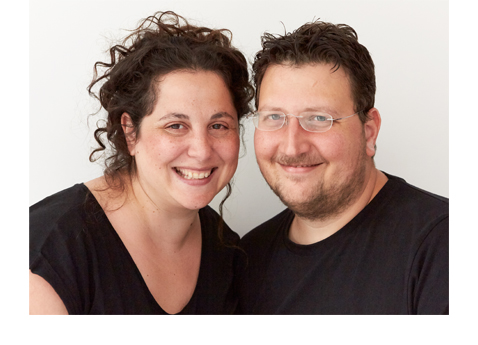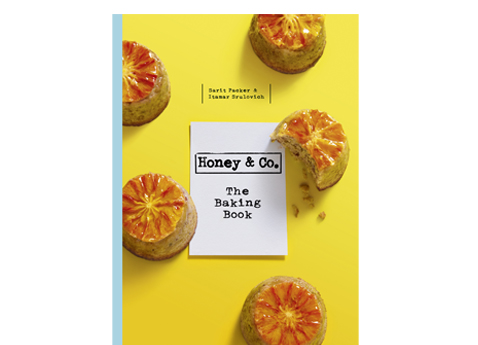Sweet as Honey & Co.


Founders of Honey & Co, Sarit Packer and Itamar Srulovich have just launched their second book ‘Honey & Co. The Baking Book’. Their first book ‘Honey & Co. Food from the Middle East’ won The Sunday Times Food ‘Book of the Year’ and Fortnum & Mason ‘Cookery Book of the Year’. We talked to them about some of their favourite foods.
To see the recipe for their delicious Blood Orange and Pistachio Cakes click here
What would you say is the notable difference between Middle Eastern and European baking styles?
I think the main difference is the use of fragrant spices and syrups, they are a big part of the baking of the region, so rather than relying heavily on sugar there is more use of honey and date molasses. Rather than just vanilla and cinnamon, we also use cardamom, fennel and mahleb in our baking to add another dimension. And nuts are really important too, as well as fresh seasonal fruit.
What are the core flavours/key ingredients of a Middle Eastern kitchen? Do these find their way into both savoury and sweet dishes?
As I mentioned before, cardamom, fennel, mahleb and then lots of cinnamon, pistachios, almonds, tahini and lots and lots of citrus. They are indeed all used in sweet and in savoury in different proportions and with different aspects as the main flavour.
What is the one ingredient you can’t live without and why?
Almonds – they are the king of all nuts, cakes, marzipan, savoury notes to a salad. Just amazing and good for your skin, too.
How possible is to authentically replicate the flavours of the Middle East in the UK without the same home grown fresh produce to hand?
Well, we buy all our produce here, and create all the flavours in the UK so think it is quite easy. In a way there is sometimes even more of a variety in the UK than what we get at home as we are blessed here with diversity. No politics come into food here so we can cook with Iranian pistachio, tahini from Lebanon, zaatar from Palestine, coffee from Israel, pomegranate molasses from Jordan and chilli flakes from turkey, and all are amazing quality.
Do you have a favourite recipe of all time? What is it and why do you love it so much?
It’s hard to say one recipe is the favourite, especially as there are two of us. I think for Itamar the chocolate hazelnut babaka is one of his favourites, and for me perhaps the strawberry splif. They are both comforting and remind us of home, but in a grown up delicious way.
Food and travel are synonymous with one another. What is the most unusual food you have tried while travelling?
We try and travel as much as we can and eat everywhere, we are always discovering new things. There was some amazing pistachio phylo baklava in Turkey that we had never seen before with bright green pastry and lovely filling (and we thought we had tasted every variety of bakalava).
Then there are the traditional sweets in Japan, made from vegetable purees and azuki beans, which were so lovely and completely different to any western sweet. Fresh cocoa bean pods in St. Lucia – a little like lychee.
Other than Middle Eastern cuisine, what is your favourite style of food?
Japanese hands down
Viking now features an Ancient Empires and The Holy Lands ocean cruise. What one taste sensation would you recommend our guests try while there?
Eating hot hummus for breakfast with a slow cooked egg and fresh pitta is a revelation! Going to the markets and eating the best fruit that is in season – just follow your nose, the figs will smell of honey, the strawberries are so strong and sweet smelling, and fragrant mangoes. And then soft dates are a must, too.
Our ships’ galleys are pretty snug. What is the smallest space you’ve had to cook in and where was it?
In our home kitchen. It is tiny, but we produce great food with minimal space and equipment.
What is your food ‘guilty pleasure’?
Chocolate, a bar of milk chocolate.
MORE IN THIS MONTH'S AMULET:
